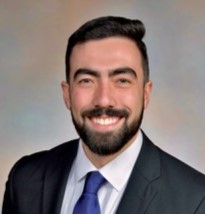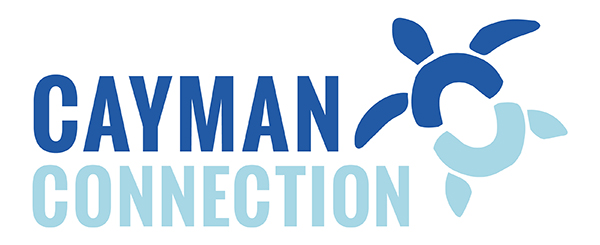USA BLOG – March 2025
Frequently Asked Questions for Caymanian Students Moving to the U.S.A.
To navigate the increasingly complex U.S. immigration process, this month’s blog post details six key practical considerations for students heading to the United States to study. For a more complete list of other important matters, refer to the Frequently Asked Questions (FAQ) for the United States on Cayman Connection’s website.
Before Applying for an F-1 Student Visa
1. Choosing a School: Research accredited institutions that offer your desired program. Consider location, cost, academic reputation, faculty expertise, campus culture, and extracurricular opportunities.
2. Financial Documents: Prepare proof of financial support, such as bank statements and scholarship letters, to demonstrate your ability to cover tuition and living expenses.
3. I-20 Form:
a. Obtaining the I-20: The I-20 Form, or Certificate of Eligibility for Non-immigrant Student Status, is a crucial document that certifies your acceptance into an academic program at a U.S. institution and your eligibility for an F-1 student visa.
b. The Application Process: To obtain an I-20, you’ll typically need to apply to your chosen school, including academic transcripts, test scores (such as SAT, ACT, or TOEFL), and a statement of purpose.
c. Financial Documentation: As part of the I-20 application process, you may need to provide evidence of your financial ability to cover tuition and living expenses. This could include bank statements, scholarship letters, or proof of employment income.
d. Review and Issuance: Once your application is reviewed and approved, the Designated School Official (DSO) will issue the I-20 form, which you’ll need to submit with your F-1 visa application.

Eddie Weber
Student Ambassador – USA
Applying for the F-1 Student Visa
1. Prepare Required Documents:
In addition to the I-20 form, gather essential documents such as your passport, passport photos, SEVIS I-901 fee receipt, and any additional supporting documents requested by the U.S. embassy or consulate.
2. Complete the Online Application:
Fill out the DS-160 Nonimmigrant Visa Application form accurately and thoroughly online. Pay close attention to the instructions and provide truthful information.
3. Schedule a Visa Interview:
Once you have completed the DS-160 form and paid the visa application fee, schedule a visa interview at the nearest U.S. embassy or consulate. Be prepared to answer questions about your academic goals, financial situation, and ties to your home country. They need to know you do not intend to overstay your visa after your studies conclude and that you plan to return to your home country (or another country).
4. Attend the Visa Interview:
Dress professionally and arrive early. The visa interview is a conversation with a consular officer. Be prepared to answer questions about your academic goals, chosen program, financial situation, and ties to your home country.
Being detailed, honest, and confident during the interview is essential. Bring all required documents, including your I-20 form, passport, and visa application fee receipt.
5. Await Visa Processing:
After the interview, the consular officer will review your application and make a decision. If approved, your visa will be issued and affixed to your passport.
6. Visa Stamping:
Once your visa is approved, you will receive a visa stamp in your passport. This stamp indicates the specific visa category (F-1) and the duration of your stay in the U.S.
Traveling to the U.S.A.
1. Visa Stamp: Once approved, your passport will be stamped with an F-1 visa.
2. Port of Entry: Upon arrival in the U.S., declare your intention to study and present your I-20 form and visa.
3. Customs and Border Protection (CBP): CBP officers may ask questions about your studies and plans. Be prepared to answer their questions honestly and confidently.
a. Proof of Financial Support: CBP officers may also ask for evidence of your financial resources to support your studies. The amount of financial support you need to demonstrate will depend on your specific circumstances, such as tuition and living expenses. It’s best to consult the specific requirements of your chosen school and the U.S. embassy or consulate. Be ready to show documents like bank statements or scholarship letters.
4. Initial Stay: The CBP officer will determine the duration of your initial stay in the U.S., typically for the duration of your academic program.
a. It’s important to note that you may need to obtain additional immigration documents, such as an I-94 Arrival/Departure Record, during your initial entry into the U.S.
5. Maintaining F-1 Status: To keep your F-1 status, you must remain enrolled as a full-time student and make satisfactory academic progress. This means attending classes regularly, maintaining good grades, and completing your coursework on time.
Getting a Phone Service in the U.S.A.
1. Major Carriers:
Verizon, AT&T, T-Mobile, and Sprint are the major carriers in the U.S., offering various phone plans with different features and coverage.
2. Prepaid Plans:
Prepaid plans offer flexibility, especially if you’re on a budget. These plans allow you to pay for your phone service in advance without a long-term contract.
3. SIM Cards:
Purchase a SIM card from a local carrier or at the airport upon arrival. This is a cost-effective option, especially for short-term stays.
4. Important Considerations:
a. Consider your usage: If you’re a heavy user, choose an unlimited plan. A prepaid plan might be more suitable if you’re a light user.
b. Check coverage: Ensure that your chosen carrier has good coverage in your area, especially if you’ll be traveling frequently.
c. Compare prices: Compare prices from different carriers to find the best deal.
d. International Calling and Roaming: If you plan to make international calls or use your phone while traveling abroad, consider a plan with international calling and roaming features.
Banking
Opening a U.S. bank account is recommended to manage your finances efficiently. You may need to provide specific documentation, such as your I-20 form and passport.
1. Student Bank Accounts:
Many banks offer special features and low fees for student checking and savings accounts.
a. Consider factors like ATM fees, online banking services, and customer support when choosing a bank.
b. Common types of bank accounts for students include checking accounts and savings accounts.
c. Some popular banks for students include Bank of America, Chase Bank, Citibank, PNC, and Wells Fargo.
2. International Banking:
If you have an existing bank account with an international bank with branches or partnerships in the U.S., you can access your account more efficiently. However, be aware of potential fees and exchange rates associated with international transactions.
Health Insurance for Foreign Students in the U.S.A.
Why it’s required: Many universities require international students to have health insurance as a condition of enrollment. You will need comprehensive health insurance that meets the minimum coverage requirements set by the U.S. government. This typically includes coverage for hospitalization, doctor visits, and emergency medical care.
How to Arrange Health Insurance:
- Through Your University: Many universities offer student health insurance plans. Check your university’s international student office for specific information and enrollment procedures.
- Private Health Insurance: You can also purchase a private health insurance plan from a reputable provider. When choosing a plan, ensure it meets the minimum coverage requirements set by the U.S. government.
Important Tips:
1. Review Coverage:
Carefully review the terms and conditions of your health insurance plan to understand the coverage limits, deductibles, and co-payments.
2. Emergency Contacts
Ensure your insurance provider has information on your emergency contacts, including proper country and area codes, so they can be contacted if needed.
3. International Student Identity Card (ISIC):
Consider getting an ISIC card, as it may offer additional benefits and discounts on health insurance and other services.
4. Understand the U.S. Healthcare System:
Familiarise yourself with the U.S. healthcare system, including how to find doctors, hospitals, and emergency services.
5. Regular Check-ups:
Schedule regular check-ups with a healthcare provider to monitor your health and address concerns.
CVS Minute Clinic, found in almost every town across the U.S., is an excellent option for quick and convenient check-ups. Prescriptions can be sent directly to the store’s pharmacy.
